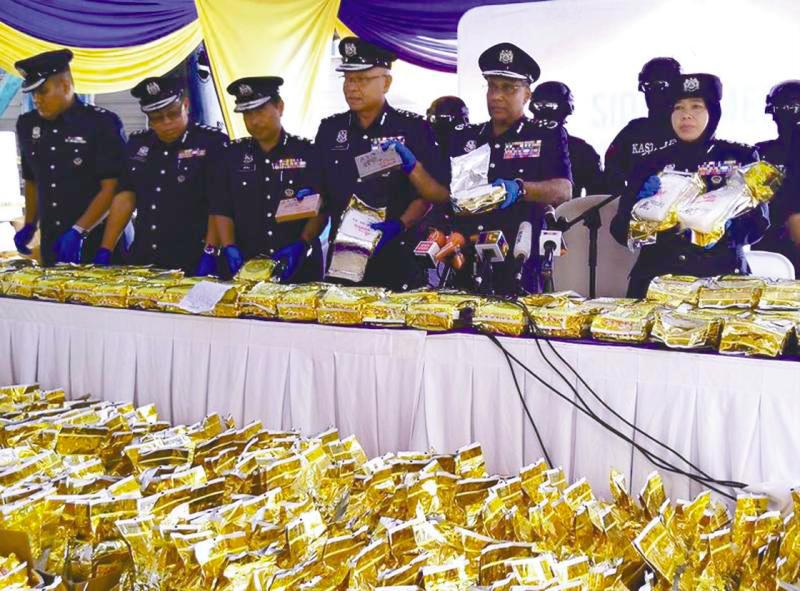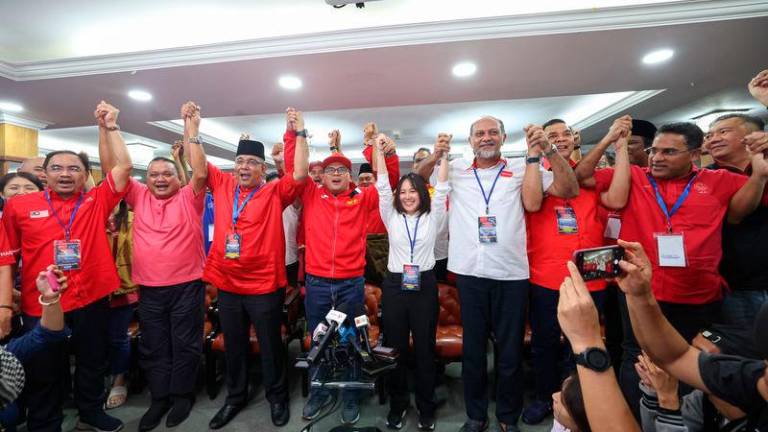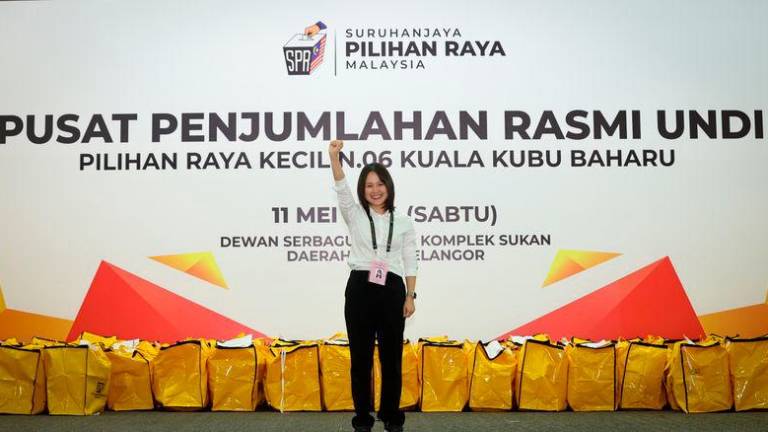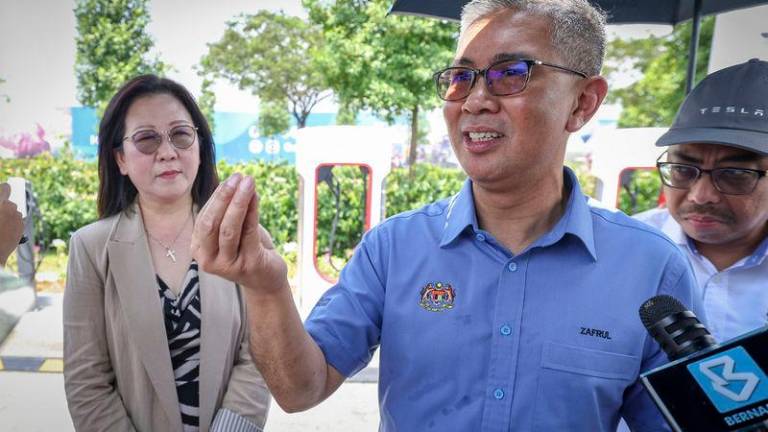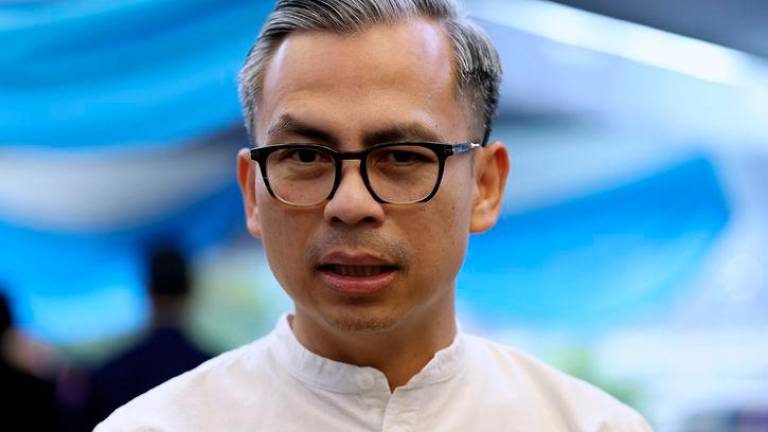CONVENTIONAL drug abuse (cocaine, ganja) remains a problem in Malaysia, with not much attention accorded to it over the last decade as other forms of social ills like baby dumping, gangsterism, bullying are on the rise.
Despite more than four decades of combating the “war on drugs” in Malaysia, drug-related issues, such as drug abuse/drug addiction as well as drug trafficking, are still rampant.
Drugs can be classified into synthetic drugs (heroin, cocaine, ecstacy, fentanyl) and natural drugs (kratom/ketum, marijuana, opium). Synthetic drugs are manufactured in the lab while some are used for medical conditions.
The World Drug Report 2022 estimated around 11.2 million drug addicts worldwide in 2020 (World Drug Report 2022 – Booklet 2: Drug Demand Drug Supply).
In Malaysia, the Department of Statistics reported that there were 108,220 drug-related cases and 129,604 drug-related arrests in 2021.
For cases involving drug suppliers and the number of related arrests, there was a rising trend from 14,823 in 2020 to 16,629 cases in 2021 and from 23,536 in 2020 to 25,277 cases in 2021, respectively.
Malaysia has been focusing on a preventative approach, which targets high-risk addiction areas in the country to be transformed into safe zones.
However, the pre-existing prevention strategy seems to be in need of bolstering. Hence, a more proactive implementation and enforcement strategy is needed to replace the current one that has been there for the past forty years.
Drug trafficking in Southeast Asia
The United Nations Office on Drugs and Crime (UNODC) in its report “Synthetic Drug in East and Southeast Asia: Latest development and challenges 2022” stated that the drug industry has been expanding continuously in the Southeast Asia region, where in 2021, both production and trafficking broke the previous record, with one billion methamphetamine tablets seized.
Drug syndicates are also evolving, especially in Southeast Asia, with Malaysia serving as a key distribution hub – being located south of the infamous “Golden Triangle” where the borders of Laos, Myanmar and Thailand converge. This makes Malaysia an eminent transit point.
In addition, the wider Asian continent clearly leads when it comes to the size of heroin and synthetic drug markets, while Southeast Asia ranks first and second for these markets overall, with Myanmar largely accounting for the high scores (“Framing the issue Countering the synthetic-drug market in Southeast Asia”, John Coyne, Global Initiative Against Transnational Organised Crime, June 17, 2022).
According to the UNODC regional representative for Southeast Asia and the Pacific Jeremy Douglas, Malaysia has been utilised extensively for the trafficking and transiting of drugs into Indonesia, the Philippines, Australia and New Zealand while Laos has become the shipping point for trafficking into Thailand and other countries along the Mekong and in the Asia Pacific (“Record-high meth seizures in East, Southeast Asia last year – UN”, Harakah Daily, May 31, 2022).
Dealers go digital
The global pandemic forced drug trafficking to go digital to serve customers during the lockdown. Amid the pandemic, drug syndicates still stood strong and kept going, with their activities of drug dealing and trafficking moving from the streets to online platforms to fulfil orders through encrypted messaging and use of legitimate delivery services to deliver the products to customers.
Online drug trafficking takes place via countless channels and platforms, including social media, e-commerce and pseudonym networks, i.e. the dark web. For recruitments, drug dealers use job vacancy advertisements online to offer high-paying work.
Based on the Darknet Cybercrime Threats to Southeast Asia 2020 Report, as of December 2019, out of all the products and services available on the dark web marketplaces, drugs were the most traded product on TOR (The Onion Router) Darknet.
Mules as transporters
One cannot also ignore the problem of drug mules, which remain a constant threat and a social concern.
Drug mules refer to the victims of drug traffickers, who are used to carry drugs across international borders, and are believed to be the weakest link in the supply-chain.
Due to our global acceptance, allowing us entry into 179 countries without a visa (according to the VisaGuide Passport Index), Malaysia has become an ideal country to transit drugs. The number of drug mules being recruited to carry or transport drugs is growing.
Drug syndicates often target vulnerable groups to be recruited as drug mules. Nowadays, with the increase in online drug trade, the younger generation is most vulnerable.
Drug cartels often target young people as they are considered to be naive and impressionable, especially those who have socioeconomic issues, such as poverty and illiteracy. This makes them an ideal target for recruiters as the victims are desperate to earn money for the family and survival. They become criminals while being victims of criminal organisations. If caught, they are sentenced to long years of imprisonment while many drug syndicate bosses go scot-free.
According to the police, using drug mules seems to be a trend in Malaysia, with a number of cases being reported. According to Bukit Aman Narcotics Criminal Investigation Department principal assistant director SAC Zulkifli Ali, from 2013 to October 2018, there were around 425 Malaysian drug mules apprehended by authorities in 19 countries, (“425 Malaysian drug mules detained abroad since 2013”, New Straits Times, Dec 23, 2018).
Additionally, almost 30 Malaysians were detained in Hong Kong over the past year for trafficking drugs for foreign organisations. However, the numbers may just be the tip of the iceberg, which does not necessarily reflect the actual number of detainees.
Death penalty
In Malaysia, drug mules are treated no different than drug lords, where possession of drugs, for example more than 15g of heroin or 200g of marijuana (“Criminal Penalties in Malaysia”, Country Reports), will attract a capital punishment – death penalty prior to the 2018 moratorium and pending its finalisation, i.e. the enactment of a Bill abolishing mandatory death sentence.
The death penalty has been proven to be an ineffective deterrent, not just in Malaysia but around the globe. Malaysia has had the mandatory death penalty for drug offences for four decades now. But as cases of drug offences and arrests continue to rise unabated, the mandatory death penalty seems as a band-aid solution only.
Under the “Special Screening Ops”, the police successfully arrested 28,710 people involved in various drug offences nationwide, which clearly shows that the death penalty is not effective in preventing drug offences in the country. Drug addicts and peddlers have the highest statistics, with 16,433 and 4,498 arrested in the ops, respectively.
Malaysia’s move to finally adopt alternative laws to the death penalty has received support from international NGOs.
Amnesty International Malaysia executive director Katrina Jorene Maliamauv said that “we applaud the government’s decision to abolish the mandatory death penalty and to grant judges discretion in sentencing. It is a welcome step in the right direction, and we urge it to go further and work towards full abolition of this cruel punishment”.
Minister in the Prime Minister’s Department (Law and Institutional Reform) Datuk Seri Azalina Othman said the death penalty law will be amended. Although it will not be abolished completely, the courts will be given the authority to determine a suitable punishment.
Meanwhile, in Singapore, the Home Affairs Ministry found that the death penalty for serious crimes, such as intentional murder, use of firearms and trafficking a considerable amount of drugs, is strongly supported by Singaporeans and Permanent Residents (“MHA: Very strong support among Singaporeans on use of death penalty for serious crimes, including drug trafficking”, Mothership, Oct 19, 2022).
In Malaysia, it will not be surprising if many Malaysians are still for the mandatory death penalty. Be that as it may, we should push for a holistic preventative strategy that addresses both the threat of illicit drug trafficking and the need for effective rehabilitation of drug mules post-abolition of the mandatory death penalty.
Emir Research recommends the following:
1. Strengthening border security
Regional and international collaboration must augment national attempts to combat drug crimes in Malaysia by widening international cooperation within Asia and around the globe.
First, detection technology used by federal, state and local law enforcement needs to be enhanced to improve the quality and promptness of interdiction activities along the borders.
Second, security at border areas must be bolstered and beefed up by the construction of multi-layered manned and unmanned systems, physical and virtual wall barriers, land and air-based sensors as these places are identified as hot spots for many illegal activities, including drug trafficking.
The deployment of drones and helicopters should also be deployed on a systematic basis. For example, one helicopter can control up to four drones at a time – the latter serving as an extension of the former.
2. Coordinating criminal justice reforms
Ministries play a pivotal role in pushing for and coordinating reforms of the criminal justice system.
With the abolition of the mandatory death penalty, the Home Affairs Ministry should focus on the actual drug traffickers (masterminds and henchmen) and come up with policy schemes, such as Singapore’s issuance of a “certificate of substantive assistance” to drug mules for providing information that is critical in disrupting, e.g. the nerve and nodal centre of the distribution channels, in lieu of life imprisonment.
The Women, Family and Community Development Ministry can complement the efforts by promoting rehabilitative schemes in lieu of a longer life imprisonment sentence.
The Human Resources Ministry can work with both the above ministries to provide life skills training and upskilling to former drug mules while in prison and post-prison to enable them to find employment quickly.
3. Create awareness among youth
In line with Anti-Drugs Agency Act 2004, the National Anti-Drug Agency (Nada) should do more to create awareness on the harmful impact and the reality of drug dealings among the younger generation by sponsoring films, documentaries, TikToks, etc. and organising roadshows, including in rural areas, alongside organising sharing sessions by former drug dealers or drug mules.
Nada should also intensify efforts to reach out to pupils and students at primary and secondary schools through classroom sessions as well as extra-curricular activities, including slogan contests, parent-teacher association-related events, etc.
Farah Natasya is a Research Assistant at Emir Research, an independent think-tank focussed on strategic policy recommendations based on rigorous research. Comments: letters@thesundaily.com



